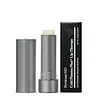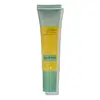What's inside
What's inside
 Key Ingredients
Key Ingredients

 Benefits
Benefits

 Concerns
Concerns

 Ingredients Side-by-side
Ingredients Side-by-side

Cocos Nucifera Oil
MaskingBeeswax
Emulsion StabilisingSimmondsia Chinensis Seed Oil
EmollientRicinus Communis Seed Oil
MaskingHelianthus Annuus Seed Oil
EmollientPolyethylene
AbrasivePolyhydroxystearic Acid
EmulsifyingAcrylates Copolymer
Ethylhexyl Palmitate
EmollientVanillin
MaskingArgania Spinosa Kernel Oil
EmollientAstrocaryum Murumuru Seed Butter
EmollientButyrospermum Parkii Butter
Skin ConditioningOryza Sativa Bran Extract
Skin Conditioning1,2-Hexanediol
Skin ConditioningCaprylyl Glycol
EmollientPhosphatidylcholine
EmulsifyingTocopherol
AntioxidantGlycine Soja Oil
EmollientTribehenin
EmollientRosmarinus Officinalis Leaf Extract
AntimicrobialOctyldodecanol
EmollientSorbitan Isostearate
EmulsifyingHelianthus Annuus Extract
EmollientSilica Dimethyl Silylate
EmollientQuaternium-90 Bentonite
Butylene Glycol
HumectantPentylene Glycol
Skin ConditioningLactic Acid
BufferingMethyl Nicotinate
SoothingPropylene Carbonate
SolventSodium Hyaluronate
HumectantPalmitoyl Tripeptide-1
Skin ConditioningCaffeine
Skin ConditioningNiacin
SmoothingAscorbyl Palmitate
AntioxidantCitric Acid
BufferingCocos Nucifera Oil, Beeswax, Simmondsia Chinensis Seed Oil, Ricinus Communis Seed Oil, Helianthus Annuus Seed Oil, Polyethylene, Polyhydroxystearic Acid, Acrylates Copolymer, Ethylhexyl Palmitate, Vanillin, Argania Spinosa Kernel Oil, Astrocaryum Murumuru Seed Butter, Butyrospermum Parkii Butter, Oryza Sativa Bran Extract, 1,2-Hexanediol, Caprylyl Glycol, Phosphatidylcholine, Tocopherol, Glycine Soja Oil, Tribehenin, Rosmarinus Officinalis Leaf Extract, Octyldodecanol, Sorbitan Isostearate, Helianthus Annuus Extract, Silica Dimethyl Silylate, Quaternium-90 Bentonite, Butylene Glycol, Pentylene Glycol, Lactic Acid, Methyl Nicotinate, Propylene Carbonate, Sodium Hyaluronate, Palmitoyl Tripeptide-1, Caffeine, Niacin, Ascorbyl Palmitate, Citric Acid
Collagen
MoisturisingWater
Skin ConditioningGlycerin
HumectantIsononyl Isononanoate
EmollientLimnanthes Alba Seed Oil
Skin ConditioningDextrin Palmitate
EmulsifyingPentylene Glycol
Skin ConditioningDiglycerin
HumectantPropanediol
SolventMenthoxypropanediol
MaskingCollagen Amino Acids
MoisturisingParachlorella Beijerinckii Exopolysaccharides
Skin ProtectingChlorella Protothecoides Oil
EmollientAcmella Oleracea Extract
Skin ProtectingBrassica Alba Sprout Extract
Skin ConditioningHelianthus Annuus Seed Oil
EmollientHydroxymethoxyphenyl Propylmethylmethoxybenzofuran
Skin ConditioningAdenosine
Skin ConditioningTocopherol
AntioxidantLeuconostoc/Radish Root Ferment Filtrate
AntimicrobialMethyl Gluceth-20
HumectantCarbomer
Emulsion StabilisingPalmitic Acid
EmollientSodium Hydroxide
BufferingDisodium EDTA
Amodimethicone
Butyl Methoxydibenzoylmethane
UV AbsorberHomosalate
Skin ConditioningOctocrylene
UV AbsorberSorbic Acid
PreservativeSodium Benzoate
MaskingPotassium Sorbate
PreservativePhenoxyethanol
PreservativeStevia Rebaudiana Extract
Aroma
Benzyl Benzoate
AntimicrobialCI 40800
Cosmetic ColorantCollagen, Water, Glycerin, Isononyl Isononanoate, Limnanthes Alba Seed Oil, Dextrin Palmitate, Pentylene Glycol, Diglycerin, Propanediol, Menthoxypropanediol, Collagen Amino Acids, Parachlorella Beijerinckii Exopolysaccharides, Chlorella Protothecoides Oil, Acmella Oleracea Extract, Brassica Alba Sprout Extract, Helianthus Annuus Seed Oil, Hydroxymethoxyphenyl Propylmethylmethoxybenzofuran, Adenosine, Tocopherol, Leuconostoc/Radish Root Ferment Filtrate, Methyl Gluceth-20, Carbomer, Palmitic Acid, Sodium Hydroxide, Disodium EDTA, Amodimethicone, Butyl Methoxydibenzoylmethane, Homosalate, Octocrylene, Sorbic Acid, Sodium Benzoate, Potassium Sorbate, Phenoxyethanol, Stevia Rebaudiana Extract, Aroma, Benzyl Benzoate, CI 40800
Alternatives
Ingredients Explained
These ingredients are found in both products.
Ingredients higher up in an ingredient list are typically present in a larger amount.
Helianthus Annuus Seed Oil is the oil derived from the seeds of a Sunflower. Sunflower seed oil is non-fragrant. It is an emollient, meaning it helps to soften the skin.
Sunflower seed oil contains many fatty acids. The fatty acids found in sunflower seeds include (from highest amount to least): linoleic acid, myristic acid, palmitic acid, stearic acid, arachidic acid, oleic acid, and linolenic acid.
These fatty acids help the skin create ceramides. Ceramides play a role in repairing the skin barrier.
Helianthus Annuus Seed Oil helps moisturize the skin. This in turn helps the skin look more rejuvenated and smoother.
Sunflowers are rich in vitamin E.
Historians believe Indigenous cultures of North America domesticated sunflowers before corn. Thus they relied on sunflower oil for a variety of uses. One such use is moisturizing skin and hair.
Sunflower seed oil may not be fungal acne safe. We recommend speaking with a professional if you have any concerns.
Learn more about Helianthus Annuus Seed OilPentylene glycol is typically used within a product to thicken it. It also adds a smooth, soft, and moisturizing feel to the product. It is naturally found in plants such as sugar beets.
The hydrophilic trait of Pentylene Glycol makes it a humectant. As a humectant, Pentylene Glycol helps draw moisture from the air to your skin. This can help keep your skin hydrated.
This property also makes Pentylene Glycol a great texture enhancer. It can also help thicken or stabilize a product.
Pentylene Glycol also acts as a mild preservative and helps to keep a product microbe-free.
Some people may experience mild eye and skin irritation from Pentylene Glycol. We always recommend speaking with a professional about using this ingredient in your routine.
Pentylene Glycol has a low molecular weight and is part of the 1,2-glycol family.
Learn more about Pentylene GlycolTocopherol (also known as Vitamin E) is a common antioxidant used to help protect the skin from free-radicals and strengthen the skin barrier. It's also fat soluble - this means our skin is great at absorbing it.
Vitamin E also helps keep your natural skin lipids healthy. Your lipid skin barrier naturally consists of lipids, ceramides, and fatty acids. Vitamin E offers extra protection for your skin’s lipid barrier, keeping your skin healthy and nourished.
Another benefit is a bit of UV protection. Vitamin E helps reduce the damage caused by UVB rays. (It should not replace your sunscreen). Combining it with Vitamin C can decrease sunburned cells and hyperpigmentation after UV exposure.
You might have noticed Vitamin E + C often paired together. This is because it is great at stabilizing Vitamin C. Using the two together helps increase the effectiveness of both ingredients.
There are often claims that Vitamin E can reduce/prevent scarring, but these claims haven't been confirmed by scientific research.
Learn more about Tocopherol